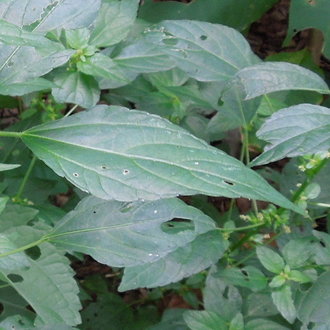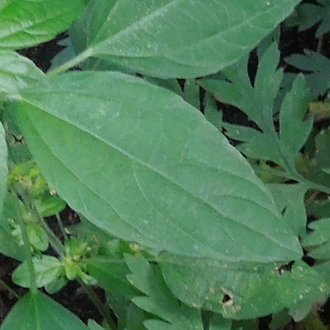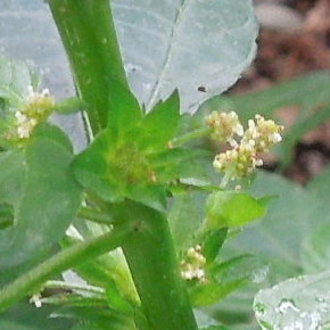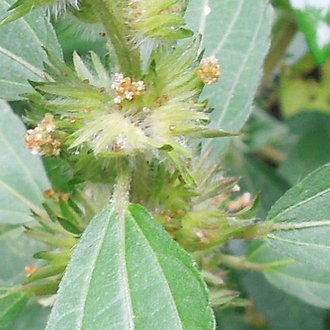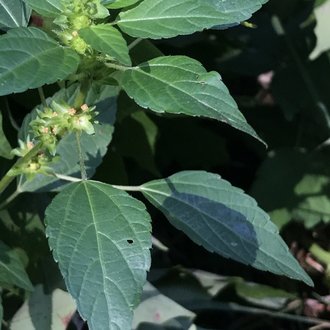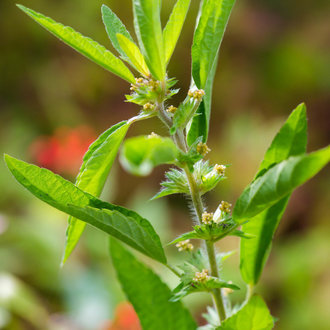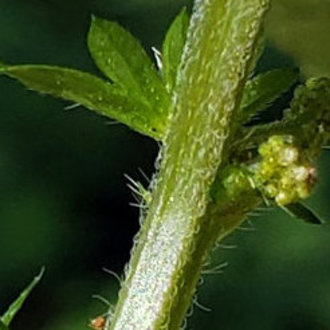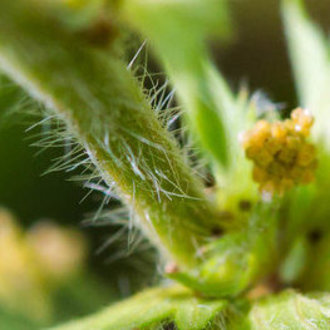Rhomboid Mercury vs Virginia Threeseed Mercury
These two species overlap greatly in range and can occur together in the same habitat. They are easily distinguished by bracts. Some individuals are easily distinguished by leaf shape and petiole length, although high variability of these traits makes them less reliable. New growth has shorter petioles, and growing conditions can alter leaf shape considerably. Although both are habitat generalists relying on disturbance at a key point in the growing season, A. rhomboidea tolerates a wider range of light and moisture conditions and soil textures, as well as low soil fertility. A. virginica prefers slightly drier conditions, and is more restricted to partly-sunny habitats with rich, loamy soil, and is slightly less likely in anthropogenic habitats.
Rhomboid Mercury (Acalypha rhomboidea) | Virginia Threeseed Mercury (Acalypha virginica) |
A common annual native to eastern to central North America, found in a range of habitats that have been disturbed in late spring to early summer. | An inconspicuous weedy annual native to eastern to central North America. Its name is midsleading: although it occurs in Virginia, it is more common farther north and west. |
Rhomboid leaves, with a more abrupt angle close to the leaf's widest point. Some leaves taper more strongly at the tip. Photo © , CC BY-SA 4.0. | Ovoid leaves, consistently curved and without a sharp angle at the leaf's widest point. Averages more blunt-tipped. Photo © , CC BY-SA 4.0. |
Bracts containing pistils and seeds usually have 5-9 lobes or segments. Often not folded, and have an open cup shape, but may look folded or "shaggy" on some plants. Only sparsely pubescent underneath Photo © , CC BY-SA 4.0. | Bracts containing pistils and seeds usually have 10-15 lobes or segments, usually folded, and densely pubescent underneath, leading to a consistently "shaggier" appearance. Photo © , CC BY-SA 4.0. |
Mature leaves lower down on the plant have longer petioles, usually more than half as long as the leaf blade. Photo © Summit Metro Parks, CC BY 4.0. | Mature leaves lower down on the plant have shorter petioles, usually 1/3rd to 1/2 as long as the leaf blade. Photo © Melissa McMasters, CC BY 4.0. |
Stems may be pubescent or not, but never as densely pubescent. Photo © aarongunnar, CC BY 4.0. | Stems consistently, and more densely pubescent. Photo © Melissa McMasters, CC BY 4.0. |
References & External Resources
These short lists show only links helpful for ID. For a complete list of references and resources also covering other aspects of ecology, visit the links section of the full article on each plant, which is the first entry here.



